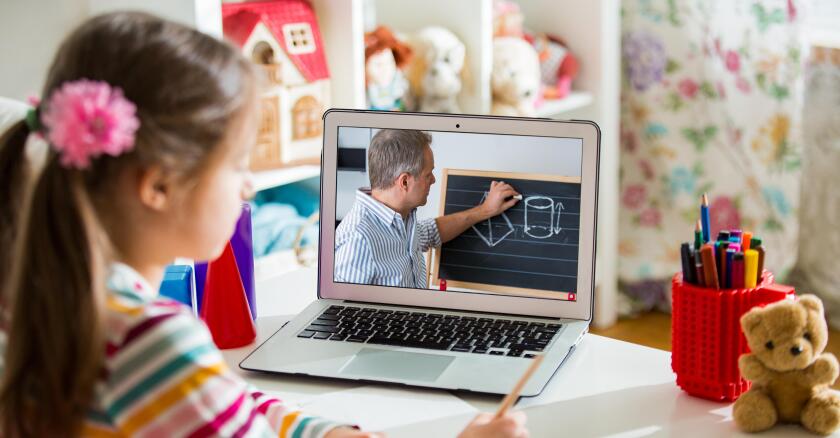Yes, our students lost some valuable learning time during those years. As the National Center for Education Statistics (NCES) recently reported on the The Nation’s Report Card, “Average scores for age 9 students in 2022 declined 5 points in reading and 7 points in mathematics compared to 2020. This is the largest average score decline in reading since 1990, and the first ever score decline in mathematics.” Many schools are taking that to mean that remote learning was a failure and are pushing back to remove all virtual learning classes. But education leaders learned valuable lessons from synchronous and asynchronous learning and should examine everything that was accomplished during that rushed push toward remote learning.
As Forbes magazine reports, remote work certainly seems to be here to stay in some form in the business world, so our education system needs to help prepare students for a future in which virtual workplaces are a reality. In a recent study by Future Forum, collaboration was found to be the main reason for resuming face-to-face work environments. Executives who prioritize collaboration, social connections and camaraderie in both virtual and physical work environments, the authors of the study concluded, “will shape a more productive and more fulfilling future that’s better for their people and their businesses.” These findings have implications for education as well.
Education leaders can implement some of these valuable lessons learned from remote work environments like flexible staffing, flexible work hours, remote technical support for students and families, and unique ways to provide broadband at home. Virtual learning is still a great platform for the professional development of teachers and administrators. Educators can benefit from understanding how to conduct meetings and training online, keep meetings and/or training interactive, hold breakout groups, and use whiteboards and other collaborative tools built into conferencing platforms as these events are conducted.
In a recent report on takeaways from remote learning, the World Bank argued that teachers are critical to the success of the program and that teaching is an intense endeavor of human interaction. Teachers can benefit from training on how to teach in a virtual environment, make online classes engaging, provide just-in-time assessment and feedback through virtual platforms, and bring parents in as partners to their child’s education.
Though many students suffered from lack of social interaction with their friends, an overwhelming amount of busy work and boredom of staying online for too many hours a day, when the New York Times asked them in April 2020, some students did report benefits from a remote learning environment. During school closings from the pandemic, some students discovered they enjoyed getting to work at their own pace, set their own schedule and be free from the stresses of the typical school environment. Some shy students benefited because the virtual environment gave a voice to everyone in the room. Having to be seen along with all other students on screen did not give them a place to hide.
Here are some other innovative ways districts can use remote learning environments to their benefit:
- When in-person classes need to be canceled for snow days
- For students with learning disabilities who may need more one-on-one support
- For pregnant or homebound students who may be at home for periods of time during their schooling
- For students who must work part of the day, an alternative way of keeping up with their schoolwork
- For collaborative projects among groups of students, giving them opportunities to work online with their peers at any time of day
- For on-demand professional development for teachers to access on their own time
- To offer more flexible opportunities for parent conferences or office hours with teachers, for better communication about student progress
- To provide remote counseling or social-emotional support classes for students in need, either one on one or in small groups
- For online tutoring after school or during hours scheduled for student and teacher convenience
Remote learning environments also have the potential to help solve some of the issues the nation is currently facing with teacher shortages. For example:
- They can be used for student teachers or beginning teachers to observe classrooms unobtrusively and learn from a mentor teacher
- Districts can collaborate with other districts to share hard-to-find teachers for classes such as foreign languages, computer science and high-level math courses
- Districts can create a Khan Academy-type setting through remote learning by using the best experts teaching multiple classes of students online. Local teachers or paraprofessionals can provide follow-up or support to the students, either virtually or face to face
So before the baby is thrown out with the bath water, districts should take the best of what was learned and provide alternative ways to educate all our students. Remote learning might still be an option that some of our students, parents and teachers need.







